The 3rdWuhan University National Culture Festival commenced on the Guiyuan playground, which was ignited by the opening song and dance “Love My China”. It was organized by the Art Association with the theme of “Singing the National Rhyme, Building a Dream of Luojia”.Zhao Xuemei, deputy secretary of the Party Committee of WHU, and Duan Xuguang, the second-ranking inspector of the Ethic and Religious Affairs Commission of Hubei Province attended the opening ceremony.

Opening song and dance--Love My China
In her speech, Zhao Xuemei pointed out that holding national cultural exchange activities would effectively promote communication and interactions between teachers and students of all ethnic groups. “I hope that students will be able to be bonded with each other closely like pomegranate seeds, taking practical actions to strive for exchanges among various ethnic groups and being the defenders of national integrity and social stability.” She said.
Student representatives were from 14 ethnic groups: Han, Hui, Zhuang, Tibet, Uyghur, Kazakh, Kirgiz, Tujia, Sui, Mongol, Miao, Yi, Manchu, and Korean (in China). They offered spectacular performances with distinctive cultural characteristics. The Cultural Festival also set up an exhibition area that displayed authentic artistic works, national customs, rare collections and musical instruments full of ethnical features.
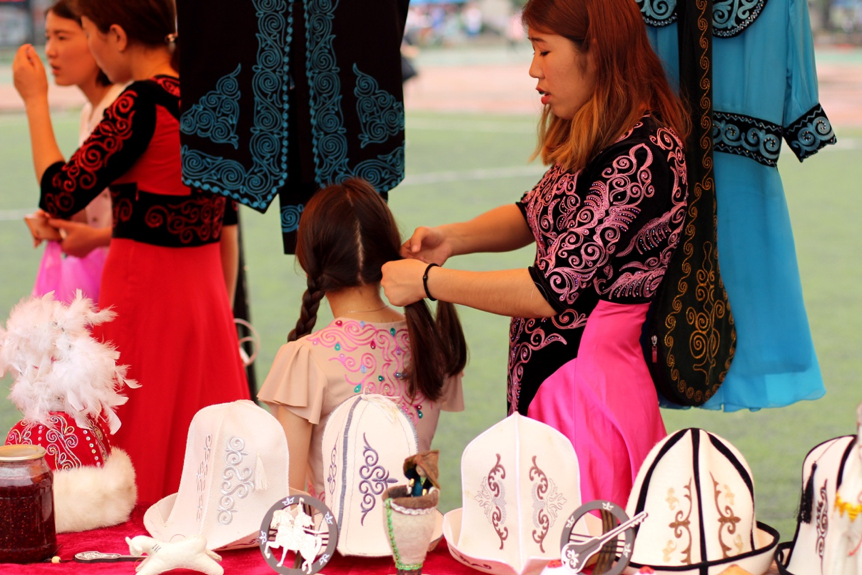
Kirgiz’s exhibition area
From the Kirgiz’s exhibition area, we get to know that the tribe is mainly engaged in animal husbandry production and concurrently lays focus on agriculture and handicraft production. The ethnic group is quite familiar with traditional arts and crafts such as embroidery, blankets, sculptures, golden and silver tools and woven flowers with the patterns of weapons, eagles, clouds, and beasts. Kirgiz’s wisdom lies not only in the these still arts, but also in their kinetic moves which keep them beautiful in bones. Active sports like horse races, licking goats, instant shooting and fetching things on flying horses are all their favorites to release vigor.
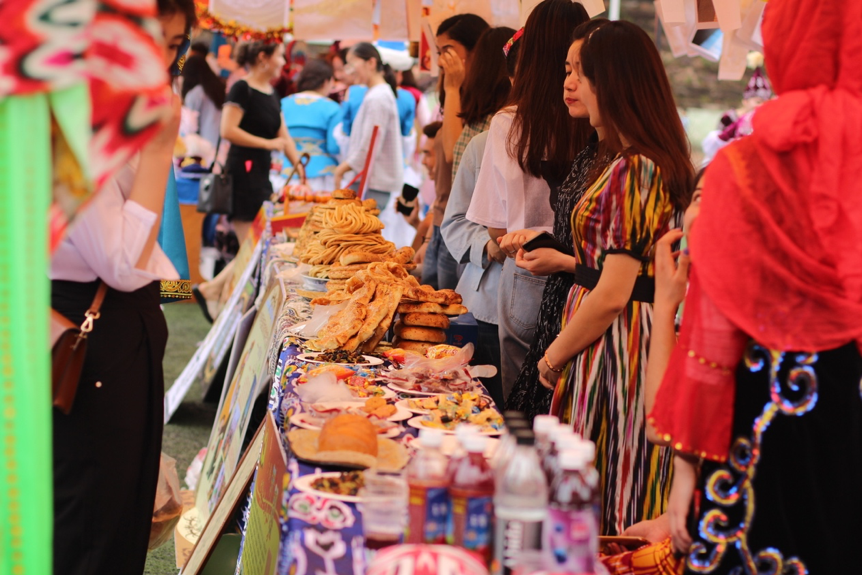
Uygur’s abundant food table
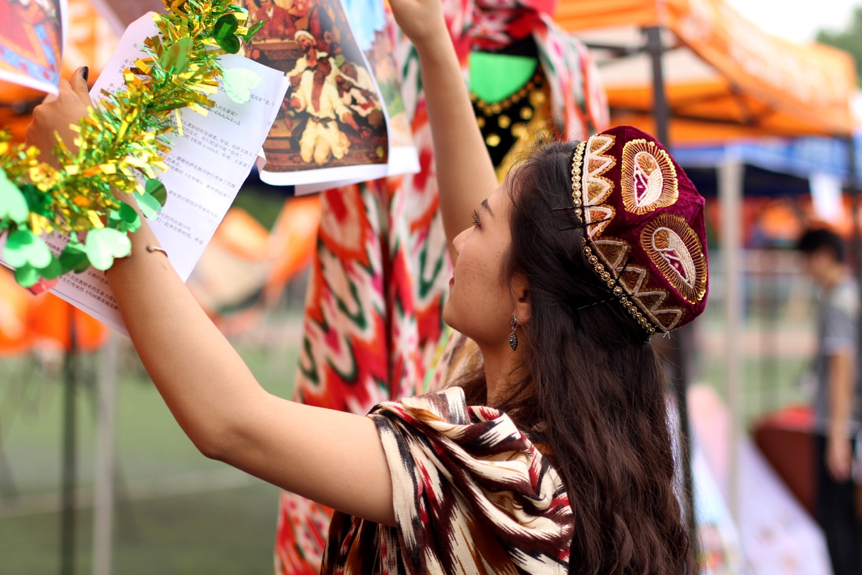
A Uygur girl puts up their tribe pictures
The Uyghur fellows live in the Xinjiang Uygur Autonomous Region and generally locate themselves in the south of the Tianshan Mountains. They treat guests with special traditions as can be easily shown by their delicate display on the food table above. There are nanns, lamb chops and chickens, as well as the most tempting pilaf in the renowned documentary “A Bite of China”. Nevertheless, the most memorable thing about Uygur is surely their calls on the streets: "Sheep skewers, mutton skewers, Xinjiang lamb skewers!"
Other ethnic groups like Yi and Tibet also made exhibitions of their colorful culture, as shown below.
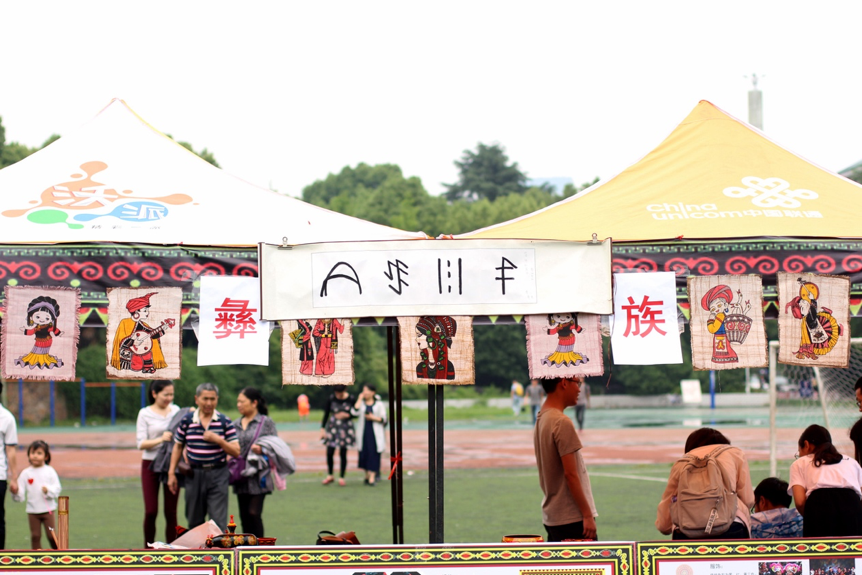
Yi’s culture exhibition area
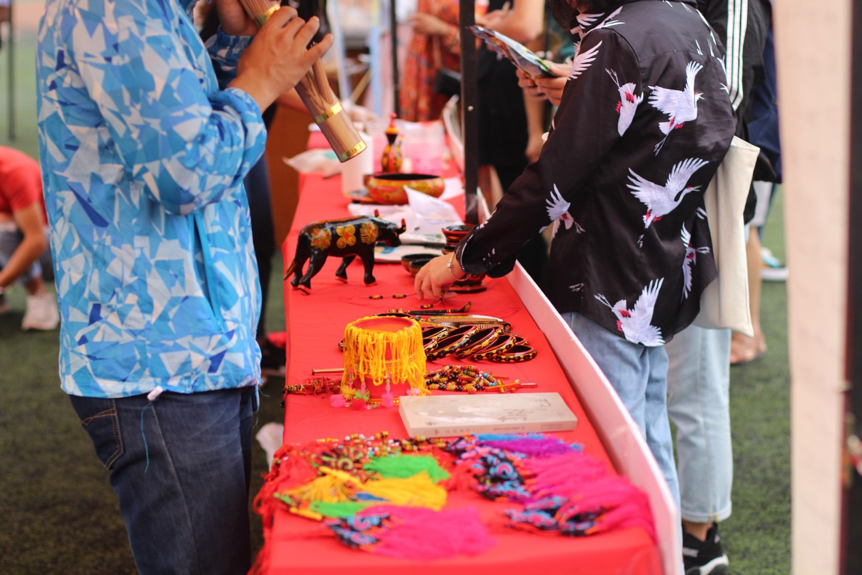
Yi’s accessories exhibition area
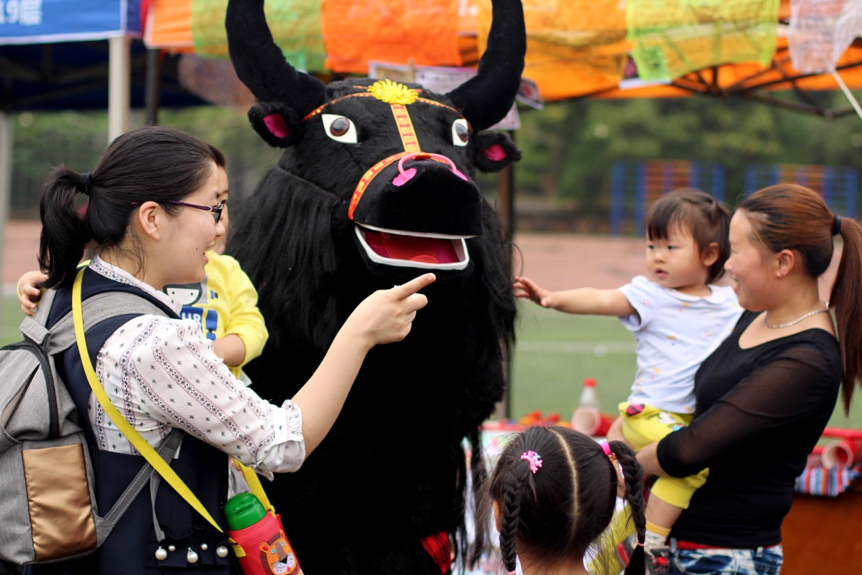
A Tibetan animal model on display
It is a visual, auditory and tasty feast for more than a thousand participants, including teachers and students. While pecking at traditional foods of various minorities, people shuttled around the dazzling array of ethnic exhibitions to learn folklore, try on national costumes, and imitate local songs and dance, making the playground a place full of laughter and enthusiasm.
It is reported that the university currently has more than 4,700 ethnic minority students that cover more than 40 ethnic groups. Since 2016, Wuhan University has been holding the National Culture Festival with the aim of promoting the splendid cultures of all minorities, educating and guiding students to firmly establish the awareness of the Chinese national community, and jointly safeguarding national integrity. The annual festival has now become an effective platform of cultural exchange between teachers and students of all ethnic groups.
(Photo by Cui Wenjing)
(Edited by Xu Yumeng, Wang Wei, Edmund Wai Man Lai, Liu Jiachen and Liu Xiaoli)